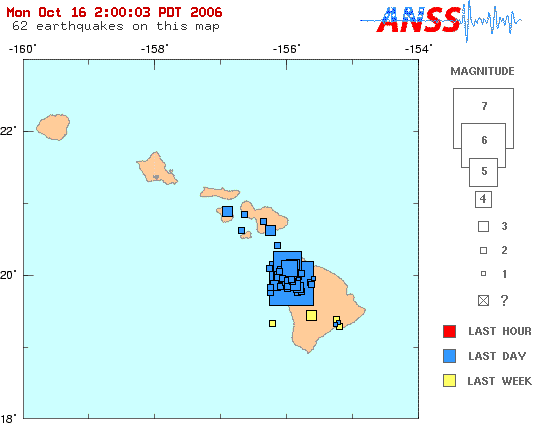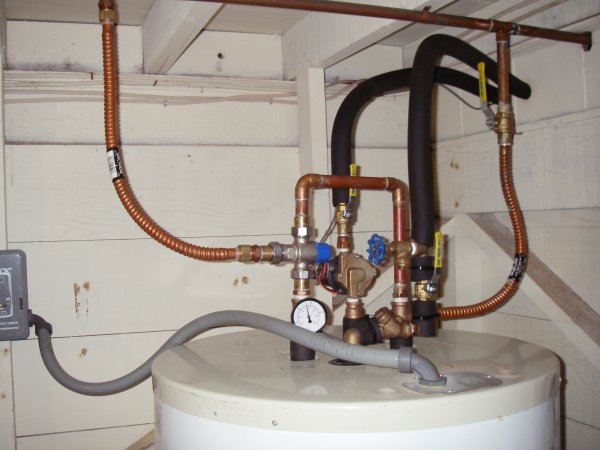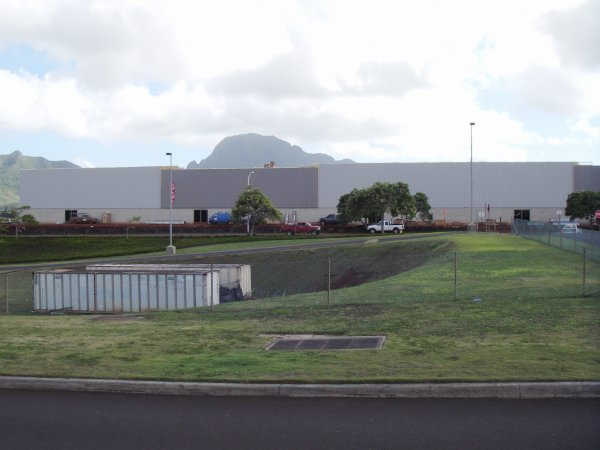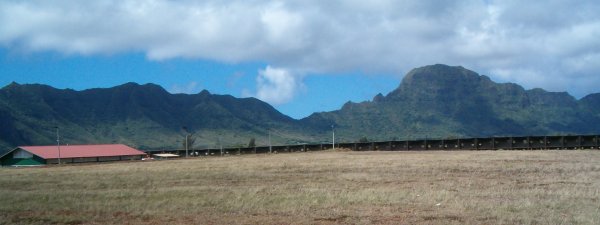An updated map from USGS shows the large aftershock which didn’t appear as large on the first map. The magnitude of both has been revised upwards, now listed as 6.7 at 7:07am and 6.0 at 7:14am.
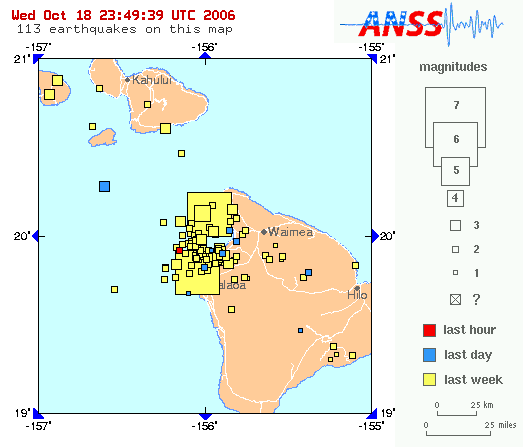
Source (dynamic): http://earthquake.usgs.gov/eqcenter/recenteqsus/Maps/HI2/19.21.-157.-155.php
Both earthquakes were deep (18 and 12 mi–29 and 19 km–below sea level I imagine, so somewhat less below the sea floor), and I’ve heard them attributed to the earth’s crust being strained and crackling beneath the weight of the volcano. That may sound surprising until you realize that Mauna Loa (“Long Mountain”) is more massive than many entire mountain ranges. One study estimates the volume of the island (or maybe just the one volcano–it’s not clear which) to be in the range of “68,750 to 79,343 cubic kilometers, or 16,494 to 19,035 cubic miles.”
And not only does the volcano rise from the sea floor which averages around 18,000′ (very roughly 6000 m) deep, its weight depresses the sea floor even deeper at the center of the island (just like you sink into a water bed). So the same study estimates the tip-to-tip height of Mauna Loa at 10.56 miles (17km), significantly more than the 6 miles (10km) usually measured from the sea floor.
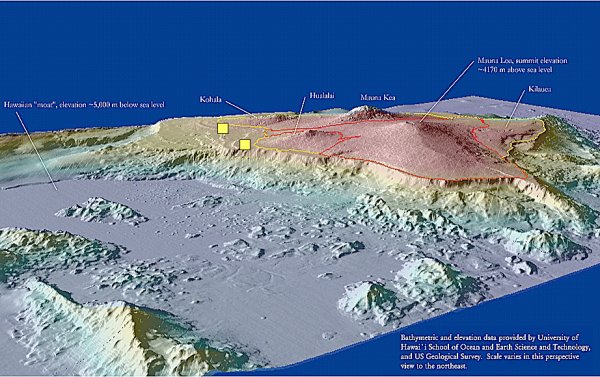
Source: http://oregonstate.edu/dept/ncs/photos/mauna.jpg
This whole explanation of the mass of the volcano is a sort of tangent, but it all makes sense if you look at where the earthquakes happened on the graphic above, as indicated by the yellow squares I added (those are the epicenters, I imagine the hypocenters were located on the downward sloping curve of the crust under the volcano mass). The earthquakes occurred below an underwater extension of the island, furthest away from the hotspot now at Kilauea volcano and in the direction that the plate is moving and forming the Hawaiian chain. If you imagine all the plate tectonics and volcanism as an interaction of fluids with differing surface tensions, this is the point where the “fountain” of volcanic rock is falling back towards the crust. So it is here that the mass of the volcano is most unsupported and weighing down on the crust away from the upswelling at the hot spot.
All this is pure speculation on my part, an educated guess if you will. However, in researching and thinking about all these geological processes, it has made me realize that there are two factors which “form” a Hawaiian island after it moves off the hot spot. The first that everybody knows about is the erosion of the atmosphere and of the ocean on the volcano’s pile of rock. The second is the interaction of the volcano’s mass with the crust beneath it and with itself, causing the volcano to subside and flatten out. This second one is often beyond our imagination because it deals with dimensions and time scales beyond our usual perception.
One reason I am fascinated with all this amateur geology is that I’d love to have an idea of what the proto-Kauai looked like when it was the “big island” of the chain. One hypothesis is that all islands looked similar to the current Big Island when they were over the hot spot. I rather suspect that the interaction of the hotspot and the crust movement and the ocean is akin to the weather: some days you get a lot of rain others not much. That would mean some islands had more mass to start with than others and maybe took longer to erode.
I suspect Kauai was one of the larger ones, because it survives larger and more monolithic than Oahu (one mountain mass versus Oahu’s two main ridges) despite being older. Another clue is the fact that “beyond” Kauai, all the islands are tiny. There is nothing intermediate unless you consider Niihau, but it may have been part of the proto-Kauai just as Lanai and Molokai were likely part of the proto-Maui. So my theory is that Kauai “hogged” the hotspot for a long time, building up a massive volcano, perhaps larger than the current Big Island. We all have dreams of gradeur.





